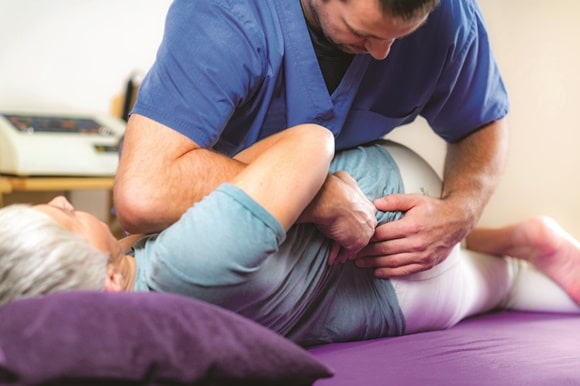Enjoy getting curled in your bed with a heating pad to get relief from this long-standing ordeal of pain? If yes, physiotherapy can come at your rescue.
While pain is a healthy response of your body to any injury, chronic pain may interfere with your daily activities. It can also affect your sleep pattern and work. Incidence of chronic pain, such as back pain and pain associated with arthritis, is commoner than what you may expect. It affects almost 18.9% individuals in Canada.
Physiotherapy may come handy while managing chronic pain. It improves the stability of the joints and flexibility of the muscles. Exercise may seem like sheer torture, but it is one of the best and permanent solutions for chronic pain that is associated with musculoskeletal problems. Let’s understand the role of physiotherapy in chronic pain.
What is Chronic Pain?
Any pain that lasts longer than 3 months is considered as chronic pain. In a majority of the cases, pain is not aggravated due to the progression of the underlying condition. Instead, it is due to succumbing yourself to the vicious cycle. Anyone facing pain tends to avoid anything that triggers pain and prefers to rest. Unfortunately, rest leads to weakness and stiffness, further worsening the condition.
Inability to carry out daily activities also results in a lowered self-esteem. Disturbed sleep and medications may further contribute to low mood.
Role of Physiotherapy in Chronic Pain
Your physiotherapist will work with you to understand your pain, what causes it, and how to manage it. Based on your problem, you will be advised techniques to take control of your pain, such as coping strategies, pain education, pacing activities, relaxation and sleep hygiene. It involves retraining your brain and mind. Benefits of physiotherapy involve:
- Enhanced flexibility
- Increased strength
- Better mood
- Improved endurance
- Stronger cardiovascular system.
Some of the therapies for relieving chronic pain are:
- Strengthening exercises: Here your therapist will use your body weight or resistance bands to strengthen your muscles. Some examples of exercises include squats, lunges, and push-ups. You may be recommended exercises to strengthen your core muscles, such as gluts, belly, and back, as well as other muscles of the body.
- Low-impact exercises: These exercises will help to speed up your heart rate while being easy on your joints. Depending on your condition, the physiotherapist will suggest low-impact exercises, such as walking fast or using a stationary bike. These exercises are usually to done before strengthening exercises.
- Pain-relieving exercises: The therapist will target affected areas to make them more flexible, which reduces pain and improves movement.
- Stretching exercises: You will be trained to stretch your muscles without overexerting them.
- Ultrasound and TENS: Ultrasound transmits sound waves to the affected area. Transcutaneous electrical nerve stimulation, on the other hand, sends out a low-voltage electric current to the skin overlying the painful area. Both therapies work by blocking pain messages from reaching your brain.
- Massage: It helps to improve the blood circulation and thus boosts the functioning of muscles and tissues. Of note, massage should be avoided in the affected area, and thus it’s a good idea to get it done from a therapist.
Know more about balance exercises for elderly
Heat and ice applications are also useful for chronic pain. The heat warms up your muscles and improves their movement, while ice lowers inflammation. Micro-current stimulation, cold laser therapy, and manipulation of bones and joints are also useful.
So, physiotherapy not only helps you to manage a physical complaint of pain, but also helps the body to heal itself.



